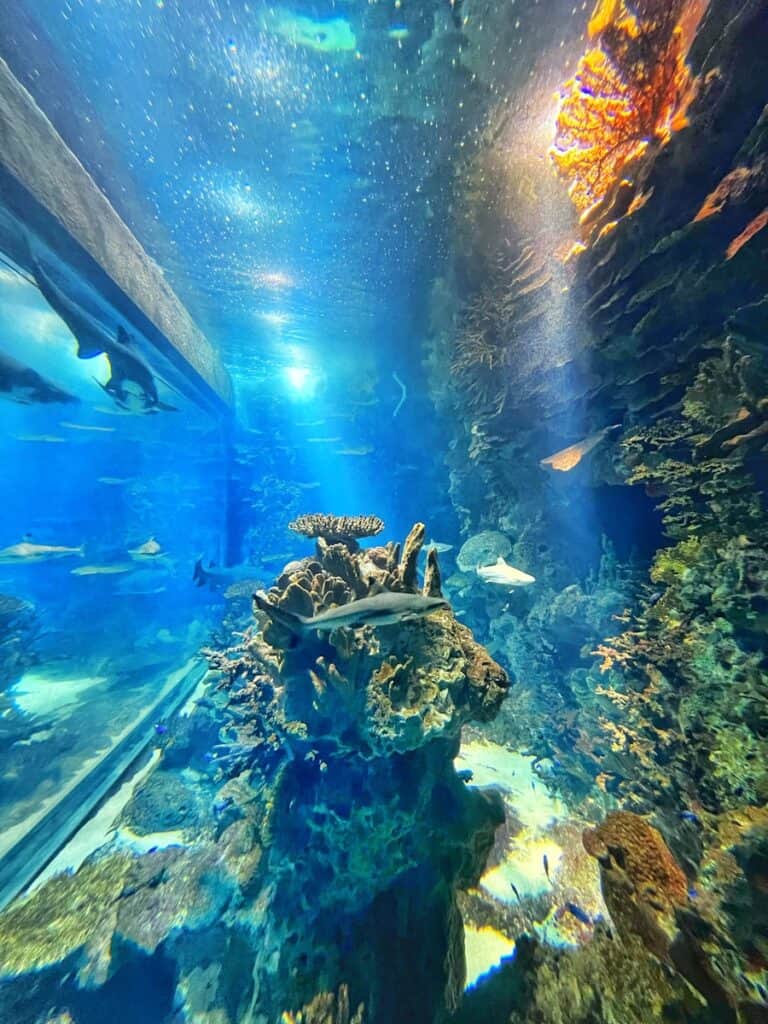In the wild, survival often depends on an animal’s ability to hide from predators or sneak up on prey. Throughout millions of years of evolution, countless species have developed remarkable camouflage abilities that seem nothing short of magical. From changing colors in seconds to mimicking their surroundings with extraordinary precision, these masters of disguise showcase nature’s ingenuity at its finest. This article explores some of the most fascinating examples of animal camouflage from around the world, revealing the science behind these seemingly supernatural abilities and how they help creatures thrive in their environments.
The Science Behind Animal Camouflage
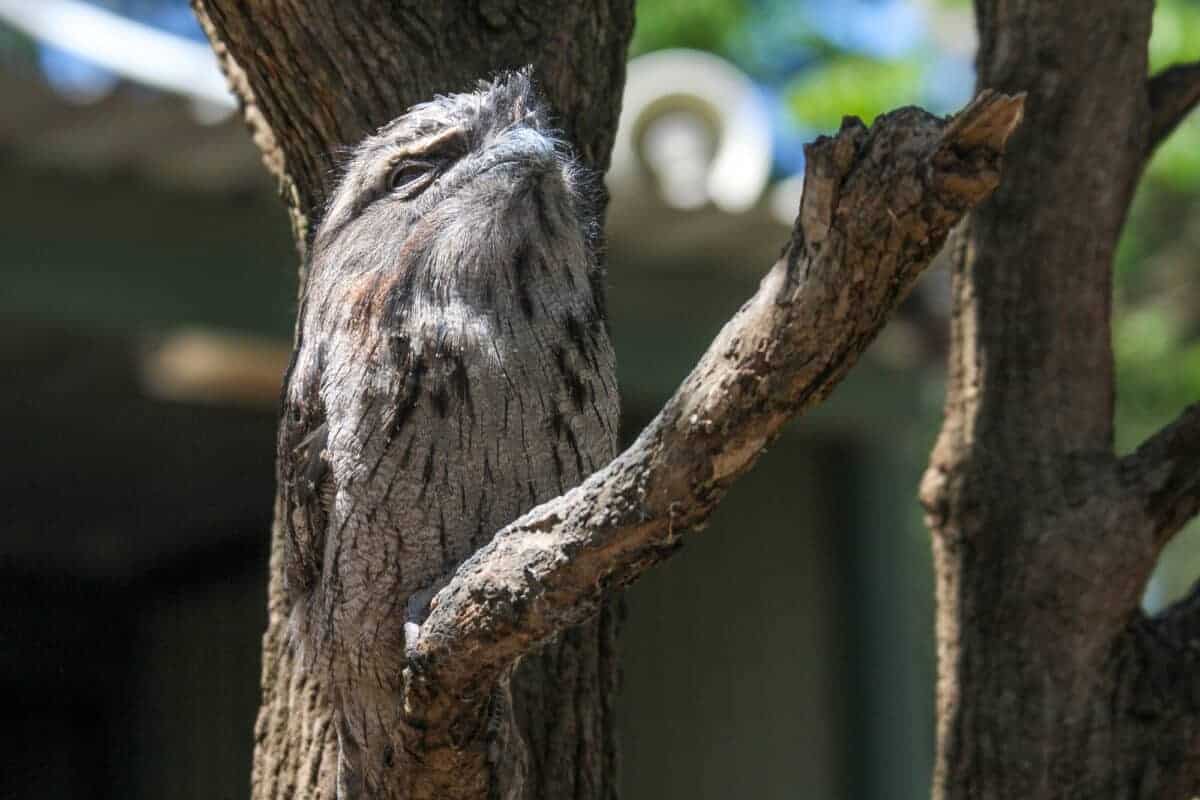
Camouflage represents one of evolution’s most sophisticated adaptations, developing through natural selection over countless generations. Animals with better disguises survived longer and reproduced more successfully, passing their advantageous traits to offspring. The science behind camouflage involves several mechanisms, including cryptic coloration (blending with surroundings), disruptive coloration (breaking up body outlines), and mimicry (resembling other objects or animals). Some species possess specialized cells called chromatophores that contain pigments, allowing rapid color changes in response to surroundings or emotional states. Others have evolved physical structures like textured skin, specialized hair, or body shapes that help them disappear into their environments. Understanding these mechanisms reveals that what appears magical is actually the result of complex biological adaptations refined over millions of years.
The Octopus: Master of Rapid Transformation
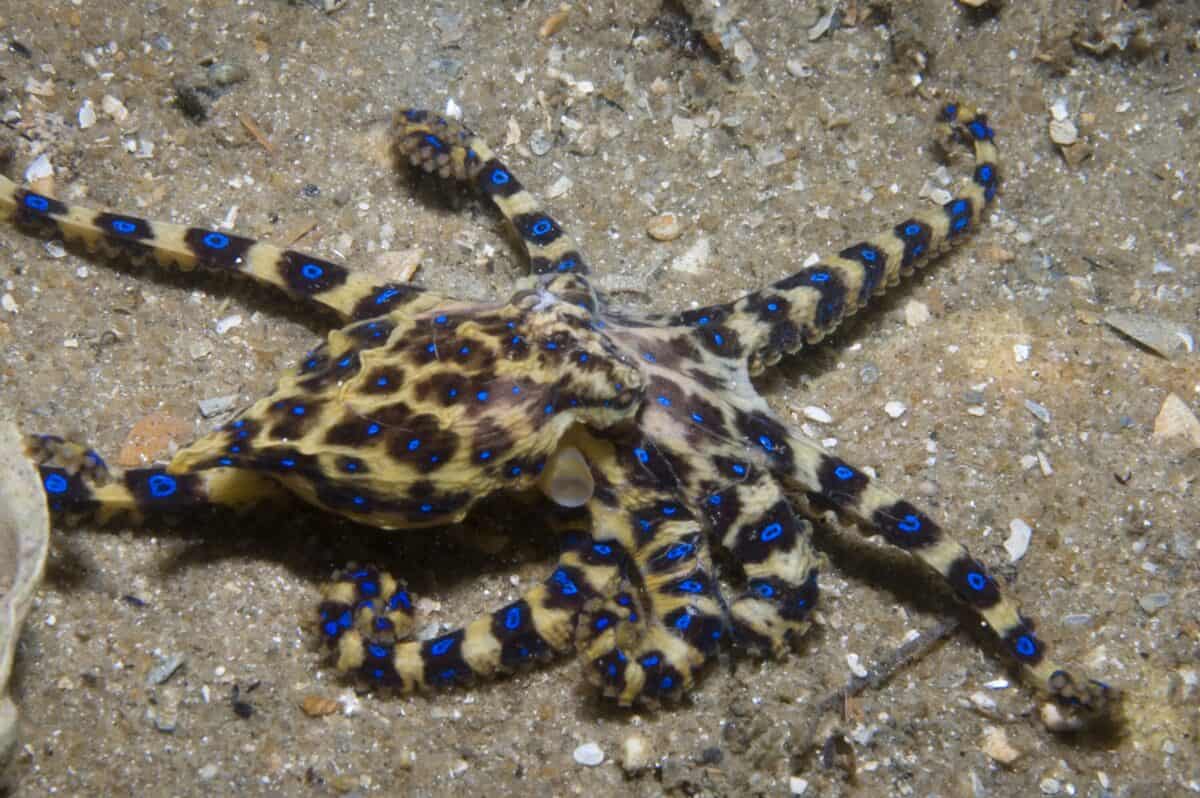
Perhaps no animal demonstrates more impressive camouflage abilities than the octopus. These cephalopods possess specialized skin cells called chromatophores, leucophores, and iridophores that allow them to change color, pattern, and even texture in less than a second. The mimic octopus (Thaumoctopus mimicus) takes this ability further by impersonating other marine creatures, including sea snakes, lionfish, and flatfish. Octopuses control these changes through a complex neural network, with their skin containing about two-thirds of their neurons. This allows them to match their surroundings with incredible precision even though they’re colorblind—a paradox that continues to puzzle scientists. Research has shown that octopuses can produce at least 30 distinct pattern variations, helping them evade predators or ambush prey in coral reefs and ocean floors worldwide. This transformative ability makes octopuses among the most versatile camouflage artists in the animal kingdom.
Chameleons: The Color-Shifting Lizards

Contrary to popular belief, chameleons don’t primarily change color to match their surroundings. Instead, these remarkable reptiles shift hues mainly to regulate body temperature, communicate with other chameleons, and express emotional states like aggression or submission. Their color changes occur through specialized cells called iridophores, which contain nanocrystals that reflect different wavelengths of light when expanded or contracted. Beneath these cells lie melanophores containing dark pigment, which provide contrast. The panther chameleon (Furcifer pardalis) displays some of the most dramatic transformations, shifting from vibrant blues and greens to striking reds and oranges in minutes. While their color-changing abilities have been somewhat exaggerated in popular culture, chameleons remain extraordinary examples of nature’s adaptability, with over 200 species found primarily in Africa, Madagascar, and parts of Asia. Their specialized visual system, featuring independently movable eyes and excellent depth perception, complements their camouflage abilities, making them effective ambush predators.
Cuttlefish: The Sea’s Light Show

Cuttlefish possess perhaps the most sophisticated color-changing mechanism in the animal kingdom. These cephalopods can reproduce almost any background pattern they observe, creating precise replicas of coral, rocks, or seaweed on their skin. Their specialized cells work together to produce a staggering array of colors, patterns, and textures simultaneously across different body parts. The giant Australian cuttlefish (Sepia apama) can cycle through multiple pattern changes in seconds, creating hypnotic, wave-like displays. Amazingly, cuttlefish perform these feats despite being colorblind themselves, suggesting they perceive contrast and brightness rather than specific colors. Research has shown they use this ability not just for camouflage but also for elaborate mating displays and communication. Scientists at the Marine Biological Laboratory in Woods Hole, Massachusetts discovered that cuttlefish can even modify their displays based on which predator they detect nearby, demonstrating remarkable visual processing abilities. Their unparalleled control over appearance has inspired bio-inspired technologies, including specialized fabrics and display technologies.
Stick and Leaf Insects: Living Plant Mimics
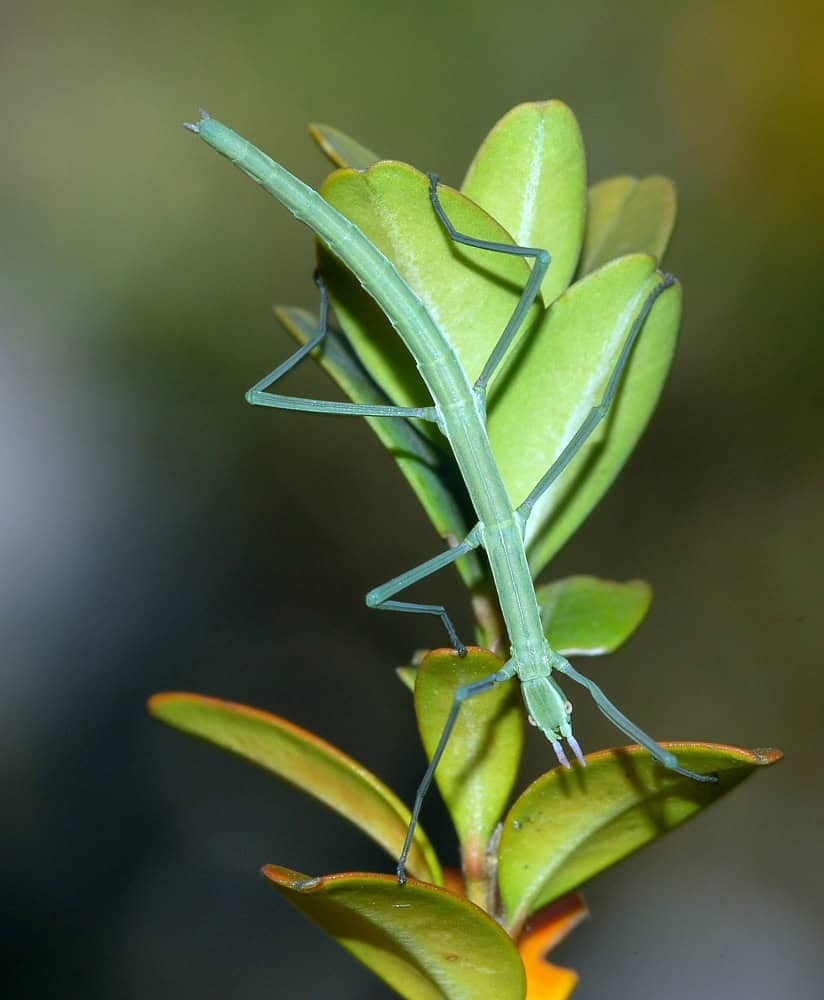
Stick and leaf insects represent some of evolution’s most convincing mimics. The walking stick (Phasmatodea) family includes over 3,000 species that resemble twigs, branches, and leaves with astonishing accuracy. Some species, like the Giant Prickly Stick Insect (Extatosoma tiaratum), enhance their disguise with irregularly shaped bodies and movements that mimic leaves swaying in the breeze. The Leaf Insect (Phylliidae family) takes this mimicry further with bodies that perfectly resemble leaves, complete with apparent veins, irregular edges that appear nibbled by other insects, and even markings that resemble leaf damage or fungal spots. What makes these insects particularly remarkable is that their camouflage isn’t just coloration but involves their entire morphology—body shape, leg position, and behavior have all evolved to perfect their disguise. Some species even change color seasonally, turning from green to brown as their surroundings change. This comprehensive disguise allows them to remain motionless for hours or days, completely invisible to predators while they feed on vegetation.
Arctic Animals: Masters of Seasonal Transformation
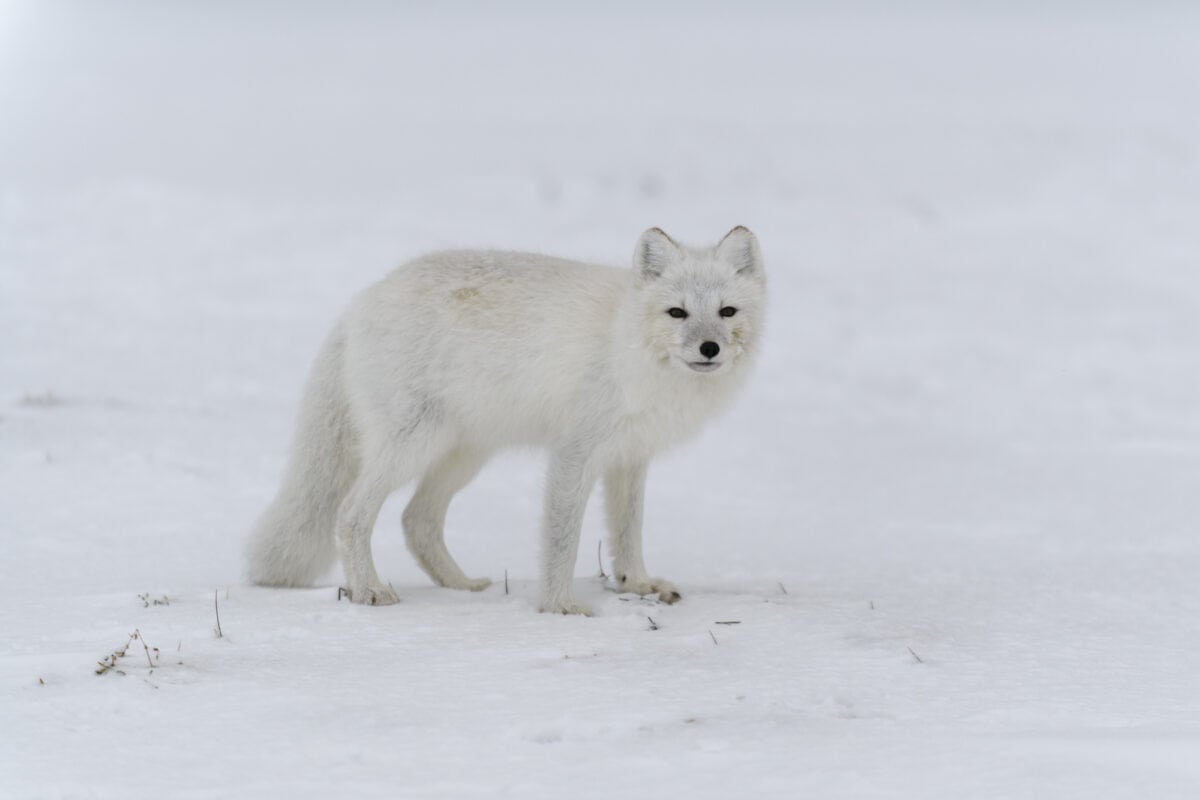
Animals in arctic and subarctic regions face the challenge of dramatically changing environments as seasons shift. Several species have evolved seasonal camouflage, changing from brown or gray summer coats to pristine white winter pelage. The Arctic fox (Vulpes lagopus) undergoes one of the most dramatic transformations, shifting from a mottled brown-gray coat in summer to pure white in winter, perfectly matching snow-covered landscapes. This change is triggered by photoperiod—the length of daylight—rather than temperature, ensuring timing aligns with seasonal changes. The snowshoe hare (Lepus americanus) demonstrates similar adaptability, with coat changes occurring over about ten weeks. Ptarmigans (Lagopus species) are among the few birds that display this seasonal camouflage, molting from speckled brown plumage in summer to white feathers in winter, with males retaining black tail feathers for display. Climate change poses a serious threat to these animals, as warming temperatures reduce snow cover duration while photoperiod-triggered coat changes remain fixed, potentially creating mismatches where white animals become conspicuous against snowless backgrounds. Research in Scandinavian mountains has already documented increased predation rates on snowshoe hares during such mismatches.
Flatfish: The Ocean Floor Impersonators
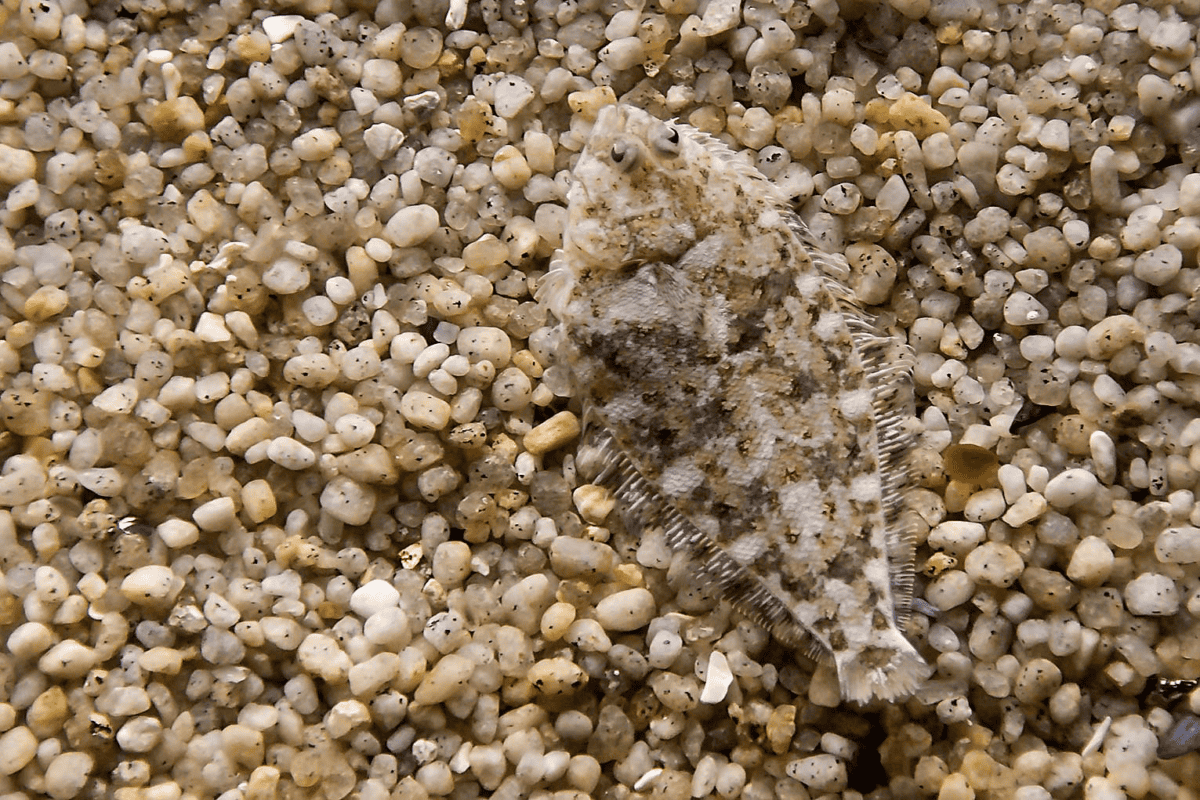
Flatfish, including flounders, sole, and halibut, represent one of nature’s most dramatic transformations. These fish begin life as conventional, symmetrical fish swimming upright in the water column. As they mature, one eye migrates across the skull to join the other, the body flattens, and they adopt a bottom-dwelling lifestyle where camouflage becomes essential. Species like the peacock flounder (Bothus mancus) can change their coloration and pattern in seconds to match the ocean floor, creating near-perfect replicas of sand, pebbles, or coral rubble. Their chromatophores allow them to produce complex patterns with remarkable precision, even recreating geometric shapes when placed on artificially patterned backgrounds in laboratory experiments. Some species enhance this disguise by covering themselves with a thin layer of sand, leaving only their eyes exposed. What makes flatfish particularly interesting is that their camouflage represents both morphological adaptation (body shape) and active camouflage (color changing), demonstrating evolution’s multi-faceted approach to solving survival challenges. Their remarkable ability to match almost any background makes them successful ambush predators across ocean floors worldwide.
Decorator Crabs: Wearing Their Camouflage
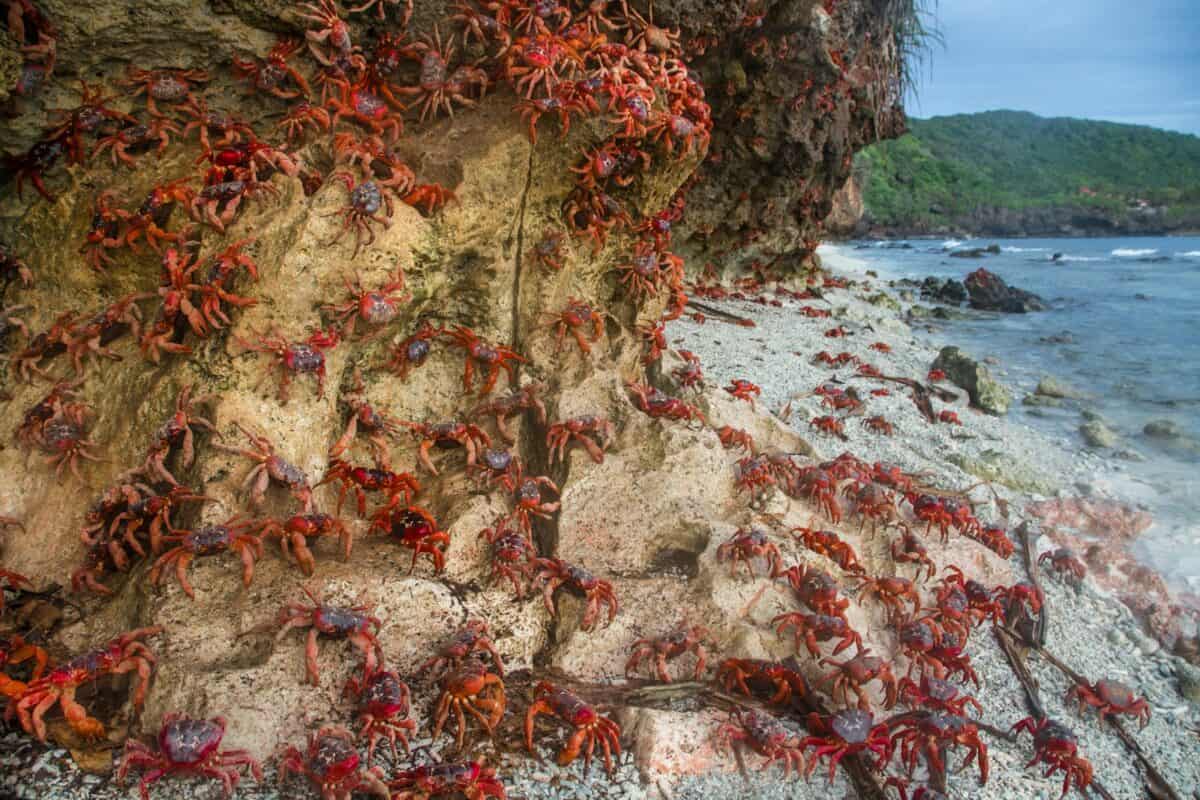
Decorator crabs employ a uniquely inventive approach to camouflage. Rather than evolving color-changing abilities or specialized patterns, these ingenious crustaceans actively collect materials from their surroundings and attach them to their shells. The spider crab (Majidae family) has specialized hooked setae—tiny, velcro-like hairs—covering its carapace that hold pieces of algae, sponges, sea anemones, and other marine materials. This self-decoration serves multiple purposes: visual camouflage, olfactory masking that hides their scent from predators, and sometimes defensive partnerships with stinging organisms like hydroids. Studies have shown that decorator crabs demonstrate remarkable selectivity in their chosen materials, preferring items that best match their current environment. When transferred to new surroundings, they’ll actively remove inappropriate decorations and replace them with better-matching materials. The Japanese spider crab (Macrocheira kaempferi), which can reach leg spans of 12 feet, uses decoration despite its massive size. This behavioral adaptation represents a fascinating example of tool use for camouflage, demonstrating that effective disguise doesn’t always require physiological changes.
Uroplatus Geckos: The Ultimate Bark Mimics
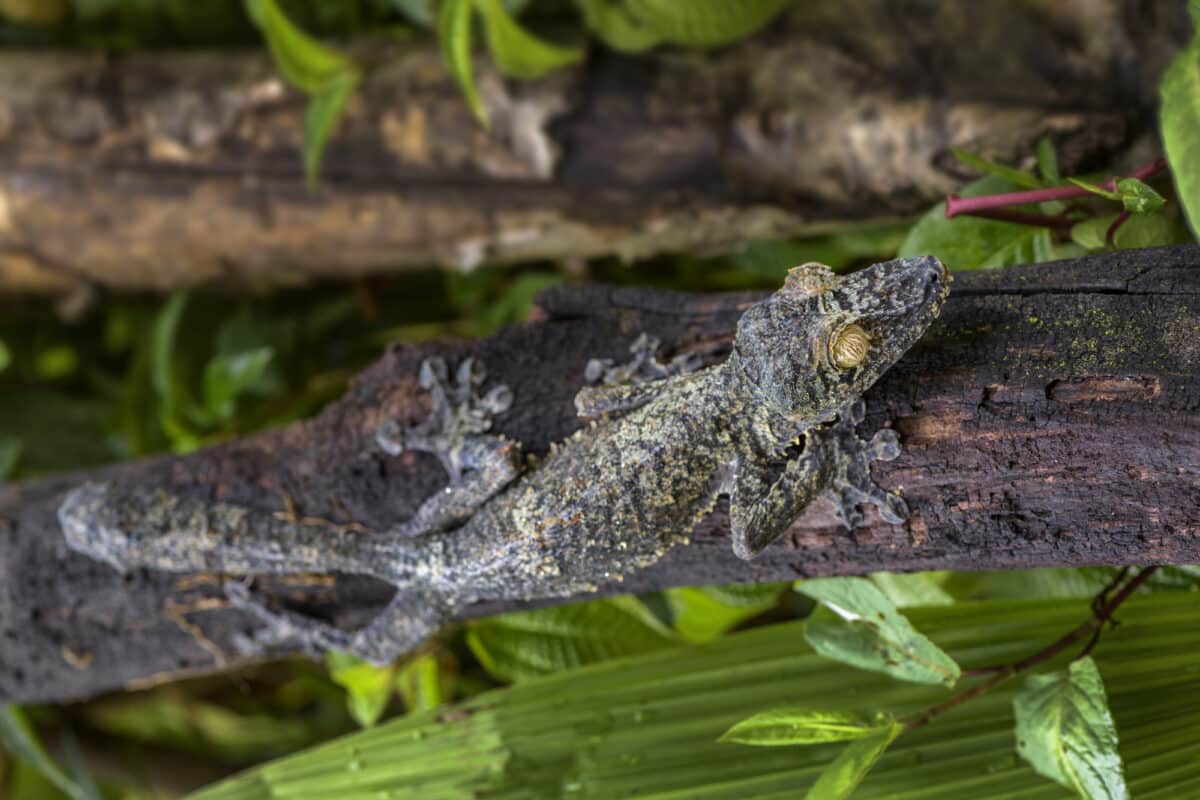
Madagascar’s leaf-tailed geckos (Uroplatus species) represent some of the most perfectly camouflaged reptiles on Earth. These remarkable lizards possess flattened bodies with irregular edges, textured skin that mimics tree bark, and leaf-shaped tails that complete their disguise. The satanic leaf-tailed gecko (Uroplatus phantasticus) even has skin that appears to show veins, discoloration, and fungal growth—perfectly mimicking dead leaves. Their extraordinary camouflage extends to behavior; when resting on tree trunks during daylight hours, they flatten their bodies against the surface, eliminate shadows by closing gaps between their body and the substrate, and remain motionless for hours. If disturbed, rather than fleeing immediately, they may perform a defensive display by opening their bright red mouths suddenly—a startling contrast to their cryptic appearance that often gives them a crucial moment to escape while predators hesitate. Research has identified specialized skin cells and microscopic structures that scatter light in ways that enhance their bark-like appearance. These geckos’ evolutionary refinement of both form and behavior makes them virtually undetectable against their natural backgrounds, showcasing camouflage evolved to perfection.
Dead Leaf Butterflies: Hiding in Plain Sight
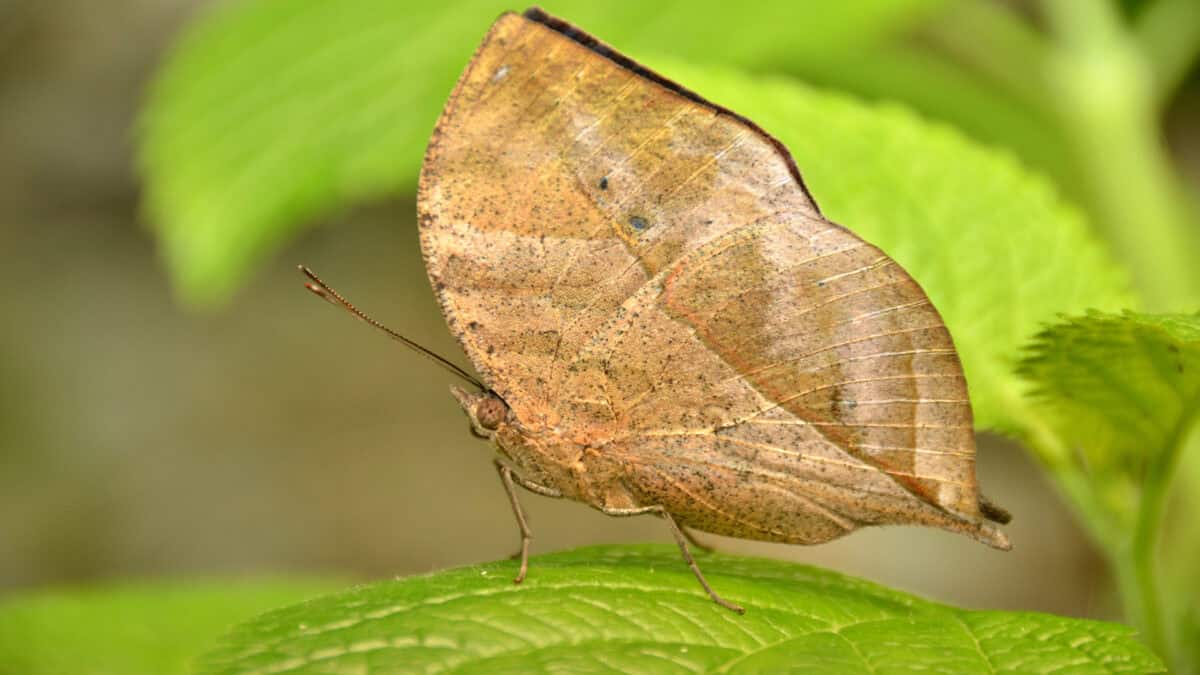
The Kallima genus of butterflies, commonly known as dead leaf butterflies, demonstrates one of the most precise examples of mimicry in the insect world. When their wings are closed, these butterflies appear identical to dead leaves, complete with remarkably accurate details. Their wings feature what appear to be leaf veins, midribs, fungal spots, and even simulated areas of decay or insect damage. The lower portion of the wing narrows to resemble a leaf stem, while the overall coloration ranges from brown to orange-yellow, precisely matching fallen foliage in their Southeast Asian forest habitats. Most remarkably, when these butterflies land on branches, they position themselves at angles typical of dead leaves and often rock slightly, mimicking a leaf moved by gentle breezes. This behavioral component enhances their already convincing disguise. The contrast between their drab exterior and vibrant wing upperside—often bright blue or orange—serves a dual purpose: the closed wings provide concealment when resting, while the vivid colors help with mate recognition during flight. Charles Darwin himself cited these butterflies as compelling evidence for natural selection in his writings, noting the perfection of their leaf mimicry.
Marine Hatchetfish: Disappearing in Deep Waters
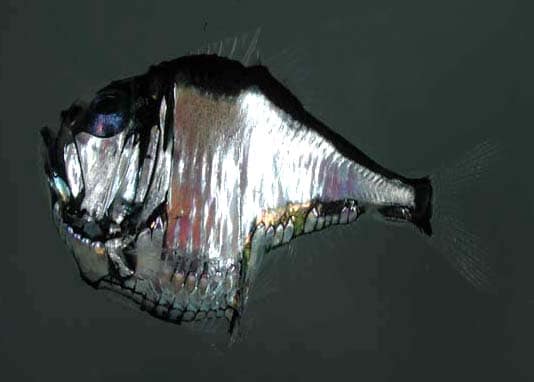
The marine hatchetfish (Sternoptychidae family) employs a sophisticated form of camouflage called counter-illumination that allows it to virtually disappear in the ocean’s mesopelagic zone (200-1000 meters deep). In this twilight realm where sunlight filters down weakly from above, predators typically spot prey as dark silhouettes against the faintly lighter background. Hatchetfish counter this by having highly reflective silvery sides that help them blend horizontally, but their most remarkable adaptation is a series of light-producing photophores along their bellies. These specialized organs produce bioluminescence that matches the intensity and color of downwelling light, effectively erasing their silhouette when viewed from below. The hatchetfish can regulate this light production to match changing conditions, maintaining their invisibility as they move through different depths. This active camouflage represents one of evolution’s most sophisticated solutions to the visibility problem in open water environments where traditional hiding places don’t exist. Research using specialized cameras that can detect bioluminescence has revealed the remarkable precision of this matching, confirming that hatchetfish can adjust their light output with extraordinary accuracy to maintain their disguise in changing light conditions.
The Conservation Challenges for Camouflage Specialists

Many camouflage specialists face significant conservation challenges in today’s rapidly changing world. Habitat destruction poses the most immediate threat, as many species have evolved camouflage specific to particular environments. The satanic leaf-tailed gecko, perfectly adapted to Madagascar’s forests, cannot simply relocate as deforestation claims 1-2% of the island’s remaining forests annually. Climate change creates additional pressures, particularly for species with seasonal camouflage like the Arctic fox and snowshoe hare, whose white winter coats become liabilities in increasingly snowless winters. Research in the Wisconsin Department of Natural Resources documented a 7% weekly increase in snowshoe hare mortality when their white coats mismatched with brown surroundings. Pollution impacts camouflage-dependent marine species like cuttlefish and octopuses, which struggle to match backgrounds in degraded habitats with reduced visibility. Additionally, specialized camouflage often involves complex adaptations that limit animals’ ability to adapt to new conditions quickly. Conservation efforts for these species must focus on protecting specific habitat types and addressing climate impacts through both mitigation and creating habitat corridors that allow for range shifts. The very specialization that makes these animals’ camouflage so remarkable also makes them vulnerable to environmental changes occurring faster than evolutionary processes can accommodate.
The remarkable camouflage abilities displayed throughout the animal kingdom highlight nature’s ingenuity and the power of natural selection to craft solutions that seem almost magical to human observers. From the rapid color transformations of octopuses to the perfect leaf mimicry of certain butterflies, these adaptations represent millions of years of evolutionary refinement driven by the constant pressures of survival. What makes animal camouflage particularly fascinating is its diversity of approaches—from active color changing to behavioral modifications, from physical resemblance to environmental decoration. As we continue to study these remarkable creatures, we not only gain insights into evolutionary processes but also find inspiration for human technologies in fields ranging from military applications to sustainable design. Perhaps most importantly, understanding the specialized nature of these adaptations reminds us of the delicate balance these species maintain with their environments and our responsibility to preserve the habitats that make their magical disappearing acts possible.
- Animals That Use Camouflage Like Magic - August 8, 2025
- The Role of Wolves in Controlling Elk and Deer Populations - August 8, 2025
- How Bowerbirds Build Elaborate Nests to Attract Mates - August 8, 2025

